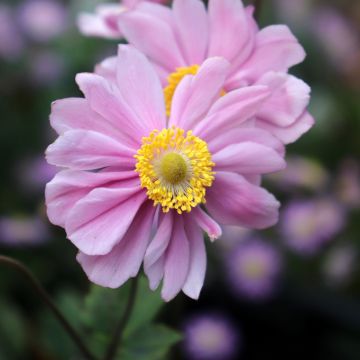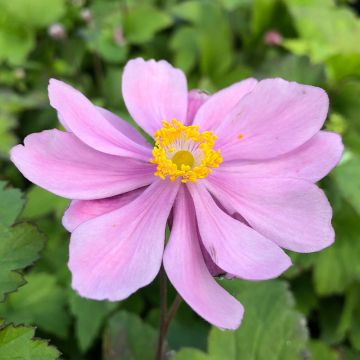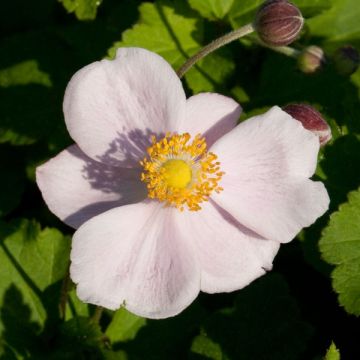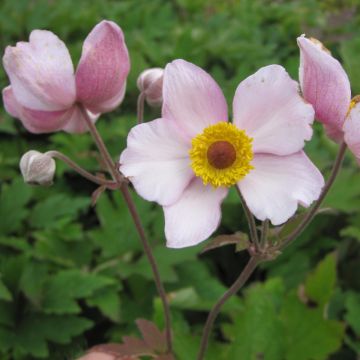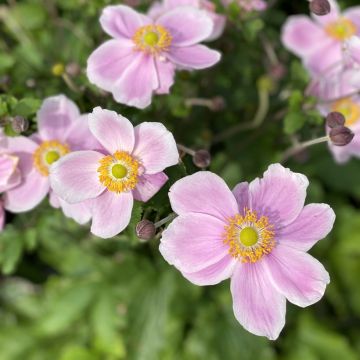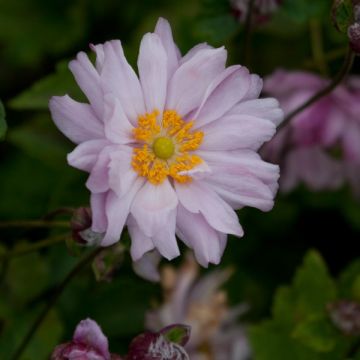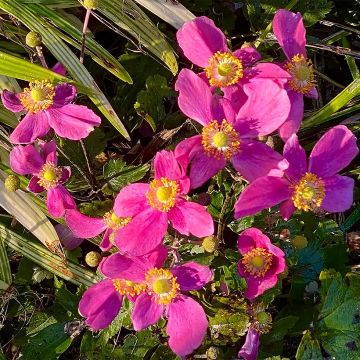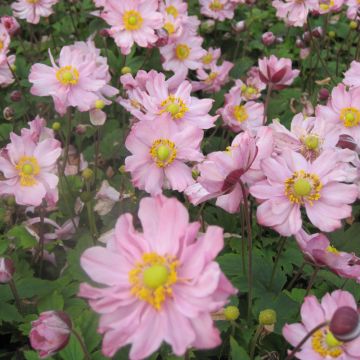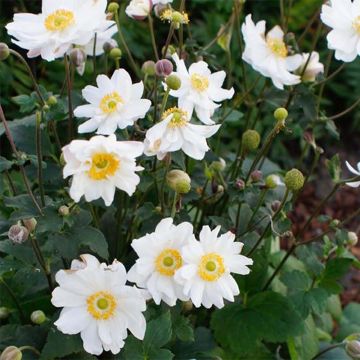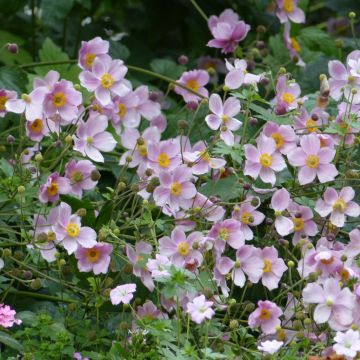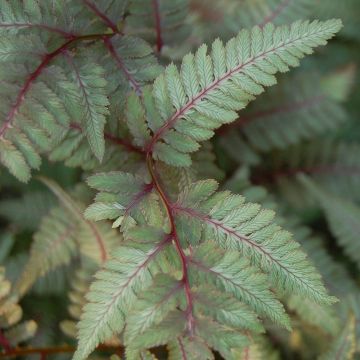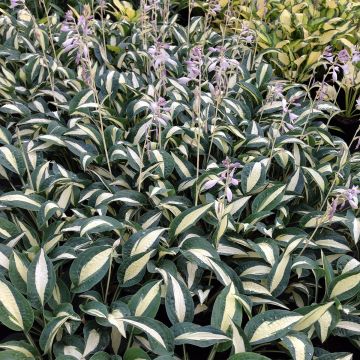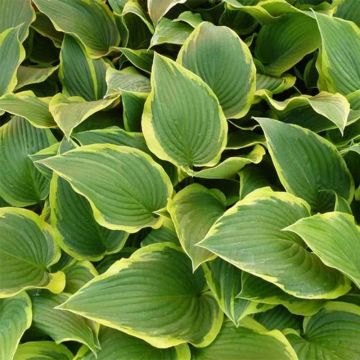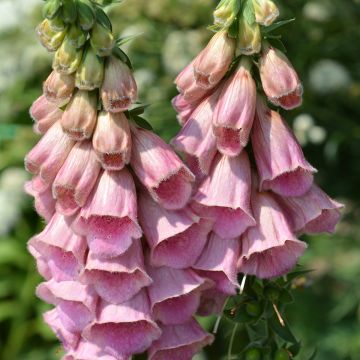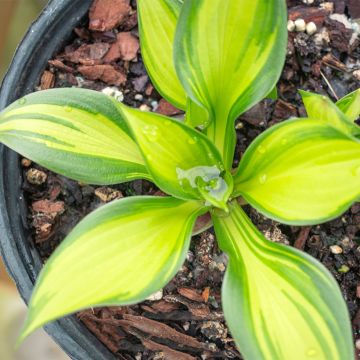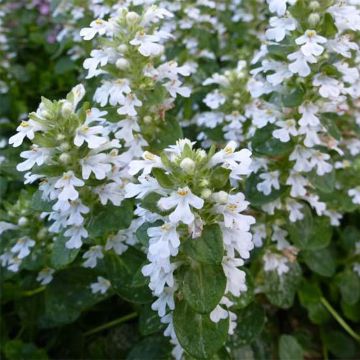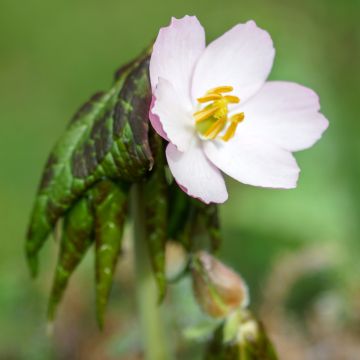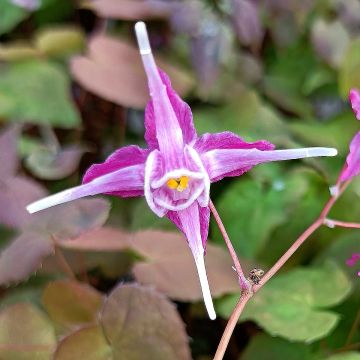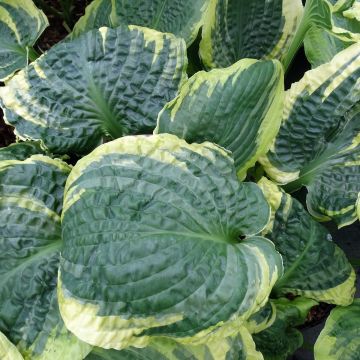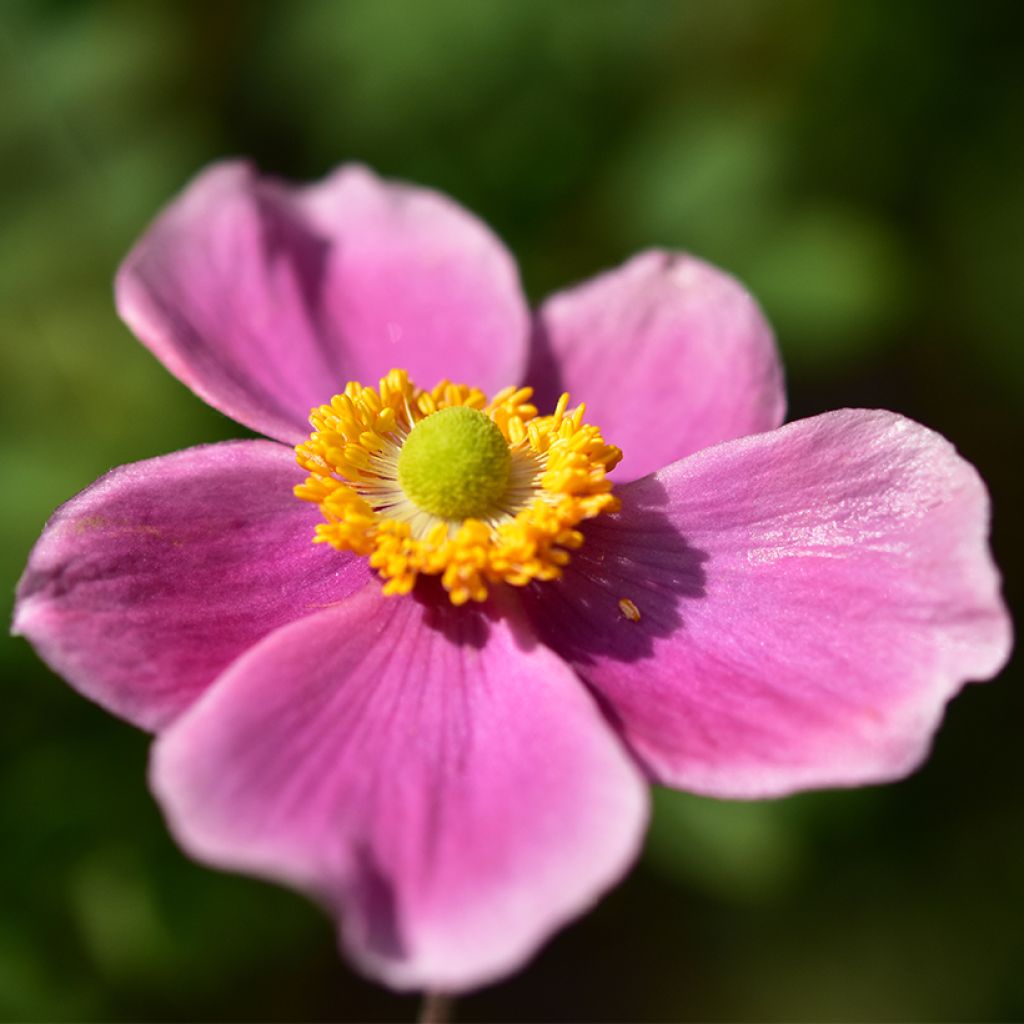

Anemone du Japon Alando rose - Anemone hupehensis
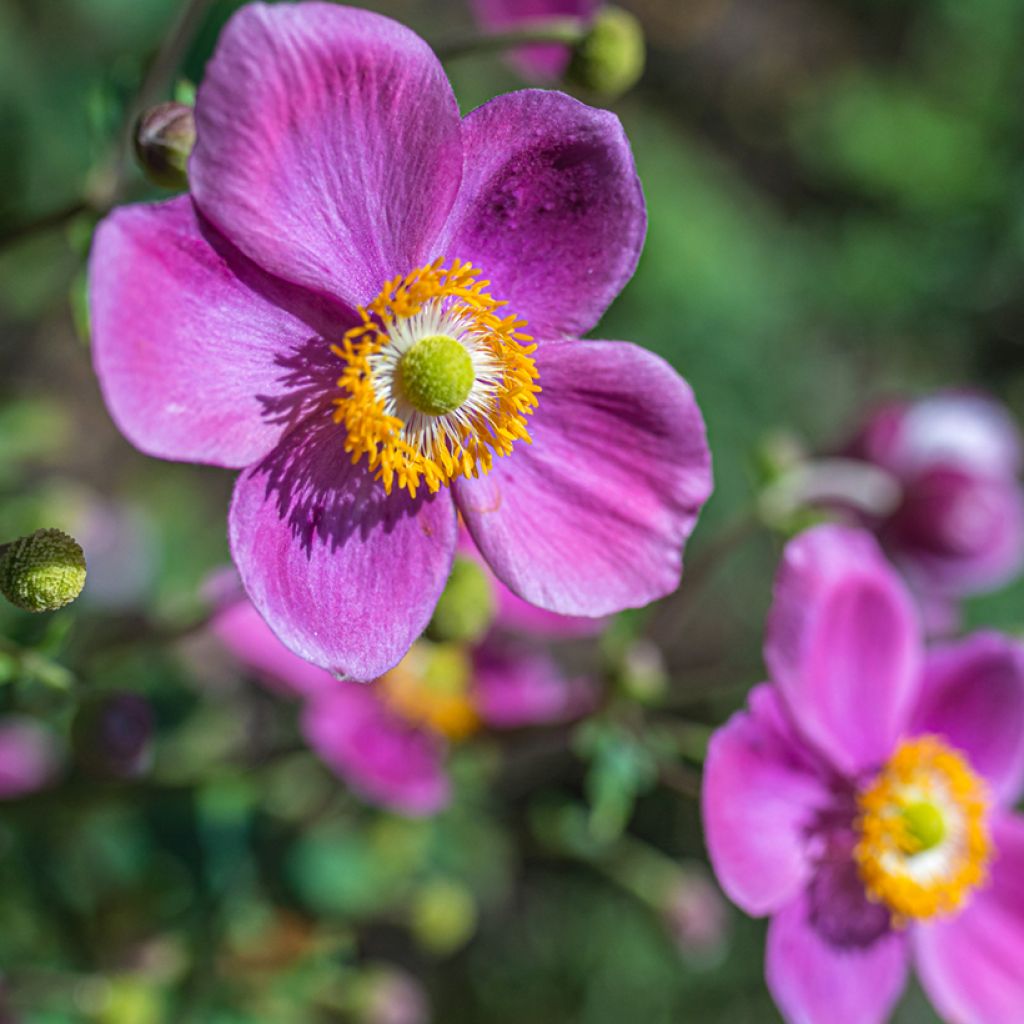

Anemone du Japon Alando rose - Anemone hupehensis
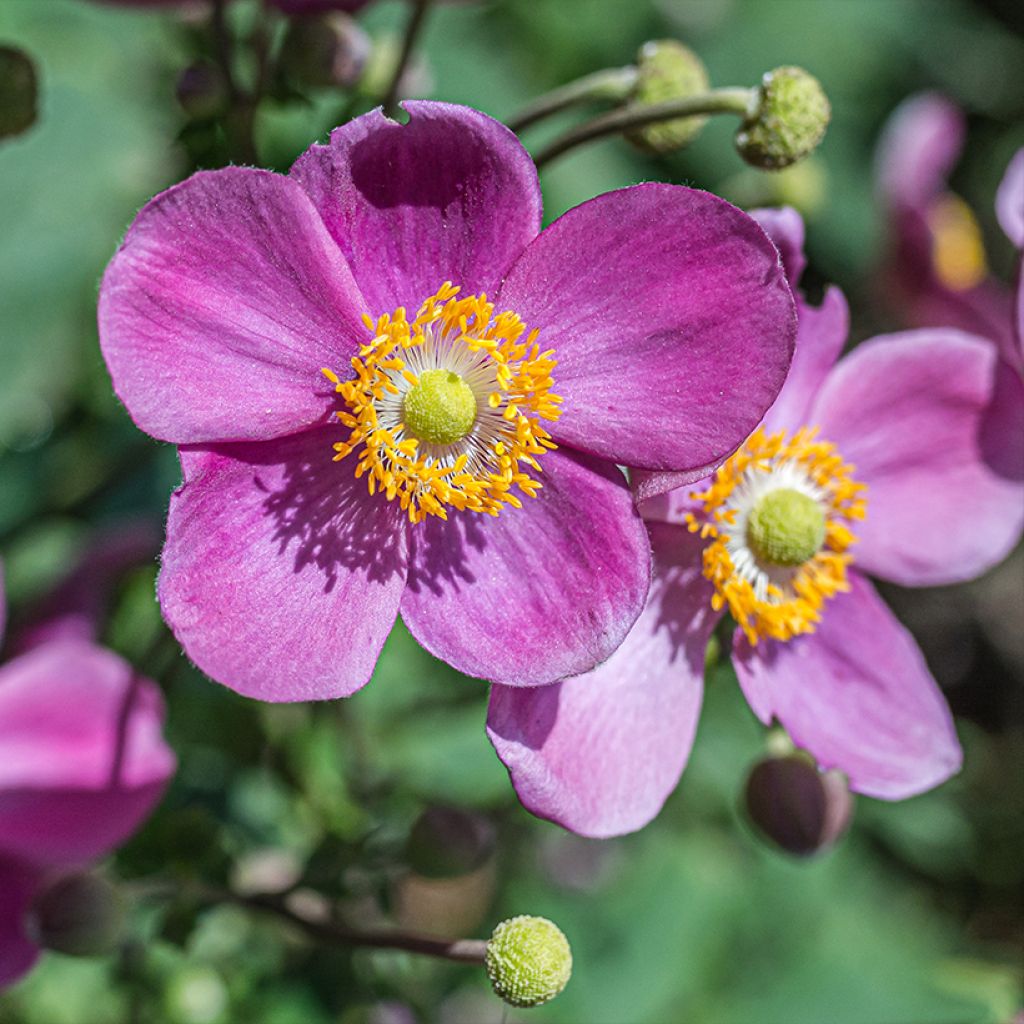

Anemone du Japon Alando rose - Anemone hupehensis
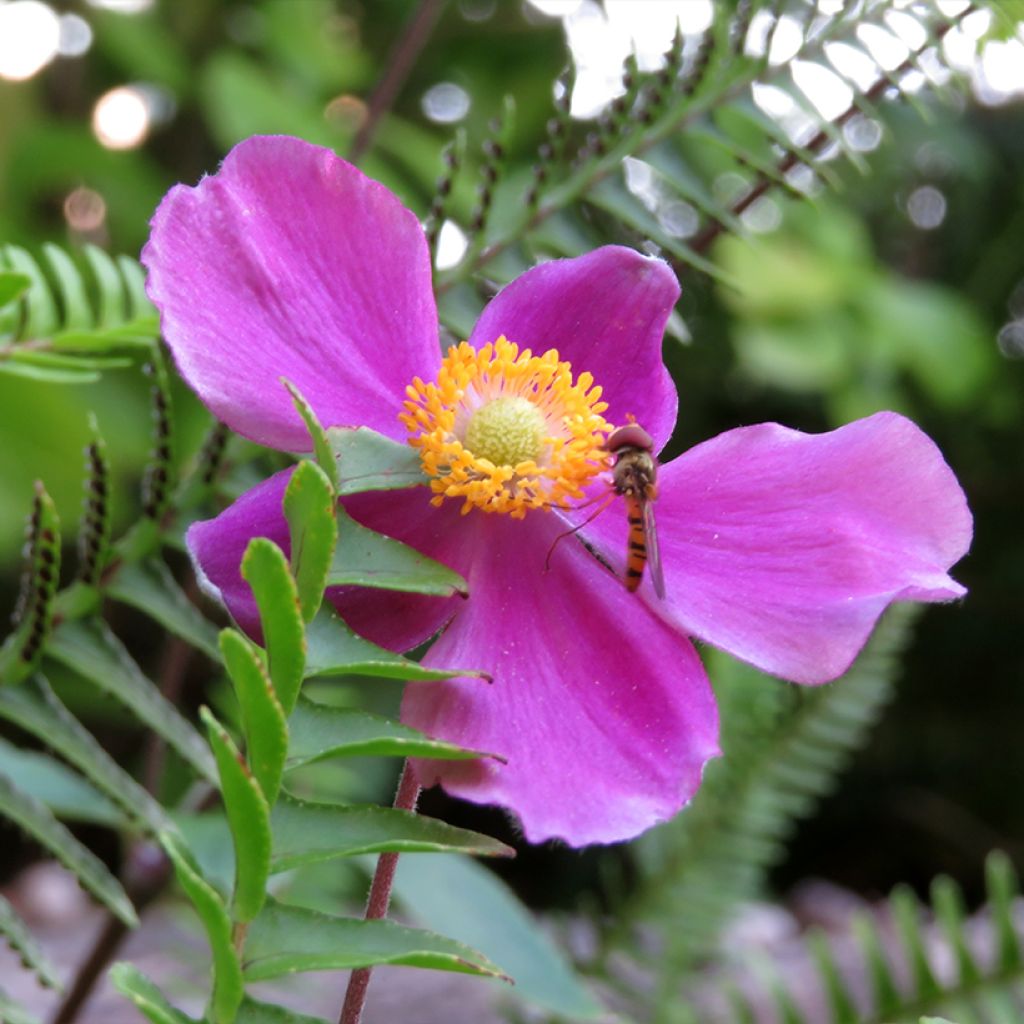

Anemone du Japon Alando rose - Anemone hupehensis
Anemone hupehensis var. japonica Alando Rose
Anemone hupehensis var. japonica Alando Rose
Japanese anemone, Thimbleweed, Windflower
This item cannot be shipped to the selected country
Delivery charge from €5.90
More information
Schedule delivery date,
and select date in basket
This plant carries a 12 months recovery warranty
More information
We guarantee the quality of our plants for a full growing cycle, and will replace at our expense any plant that fails to recover under normal climatic and planting conditions.
From €5.90 for pickup delivery and €6.90 for home delivery
Express home delivery from €8.90.

Does this plant fit my garden?
Set up your Plantfit profile →
Description
This Anemone displays single deep, vibrant pink cup-shaped flowers on tall stems. They gently sway on slender but sturdy stems from late summer to autumn. The elegance of this perennial is matched by its blooms, which will brighten up the garden with its delightful flowers, even in shade or woodland. To be planted in cool, humus-rich soil, that is not too chalky.
Japanese anemone 'Alando Rose' is a particularly floriferous perennial belonging to the Ranunculaceae family. Presumably resulting from the cross-breeding between Anemone vitifolia, of Himalayan origin, and Anemone hupehensis, native to central and western China, this fairly large variety reaches a height of 90 cm depending on the richness of the soil it grows in, with a diameter of 50 to 60 cm. Like other Japanese Anemones, it is a perennial plant with fibrous 'tubers' that form large, vigorous, and rounded clumps. The foliage is deciduous to semi-evergreen depending on the climate, highly dissected, dark green, strongly veined on the underside, and more or less hairy. The flowering takes place from August-September to November. The flowers are solitary, carried by strong, slender, and upright stems. They first appear as delightful oval and fluffy buds, pink in colour, then open up into slightly loose, flared cups. Their colour is a bright pink with a wide crown of yellow-orange stamens. The petal edges are margined with white in this variety. Japanese anemones can live for decades in the same location.
The Japanese anemone is one of the loveliest autumn flowers. Light and graceful, it gently sways in the wind, indifferent to the first frosts. It decorates the garden or large pots on the terrace from late summer to the first frost. Perfect at the back of a border for the larger ones, it blends its elegant flowering with the grace of Aster cordifolius such as Aster cordifolius 'Blue Heaven', and the nostalgic charm of perennial chrysanthemums. The Alando Rose variety is perfect in the center of a border, in front of a hedge of hydrangeas and spindle trees for example. Finally, the finely dissected foliage of the anemones adds a beautiful dark green touch to flower bouquets. Sometimes invasive if it likes its surroundings, it easily self-seeds. It is quite easy to limit its spread.
Several dozen perennial or bulbous species with very different needs and behaviours make up this genus. The decorative flowers sway gently in the wind, offering an animated simplicity that gives them their charm and makes them essential in a garden. Cultivars derived from A. h. var. japonica have many more petals than the type.
Report an error about the product description
Flowering
Foliage
Plant habit
Botanical data
Anemone
hupehensis var. japonica
Alando Rose
Ranunculaceae
Japanese anemone, Thimbleweed, Windflower
Cultivar or hybrid
Other Japanese Anemones
Planting and care
Japanese anemones grow in partial shade, in a moist, humus-rich, well-drained soil with a loose texture and without too much limestone, where they slowly spread with the help of their underground rootstocks. Plant it in a sheltered spot, away from strong winds, in spring or autumn, spacing them 30 cm (12in) apart. Once the young plants are established, they should not be disturbed. The flowering becomes increasingly abundant as the years go by. In late autumn, cut the flower stems to ground level. Every 2 or 3 years, apply well-rotted compost at the base to enrich the soil, as they are quite demanding.
Planting period
Intended location
Care
-
, onOrder confirmed
Reply from on Promesse de fleurs
Shade-loving perennials
Haven't found what you were looking for?
Hardiness is the lowest winter temperature a plant can endure without suffering serious damage or even dying. However, hardiness is affected by location (a sheltered area, such as a patio), protection (winter cover) and soil type (hardiness is improved by well-drained soil).

Photo Sharing Terms & Conditions
In order to encourage gardeners to interact and share their experiences, Promesse de fleurs offers various media enabling content to be uploaded onto its Site - in particular via the ‘Photo sharing’ module.
The User agrees to refrain from:
- Posting any content that is illegal, prejudicial, insulting, racist, inciteful to hatred, revisionist, contrary to public decency, that infringes on privacy or on the privacy rights of third parties, in particular the publicity rights of persons and goods, intellectual property rights, or the right to privacy.
- Submitting content on behalf of a third party;
- Impersonate the identity of a third party and/or publish any personal information about a third party;
In general, the User undertakes to refrain from any unethical behaviour.
All Content (in particular text, comments, files, images, photos, videos, creative works, etc.), which may be subject to property or intellectual property rights, image or other private rights, shall remain the property of the User, subject to the limited rights granted by the terms of the licence granted by Promesse de fleurs as stated below. Users are at liberty to publish or not to publish such Content on the Site, notably via the ‘Photo Sharing’ facility, and accept that this Content shall be made public and freely accessible, notably on the Internet.
Users further acknowledge, undertake to have ,and guarantee that they hold all necessary rights and permissions to publish such material on the Site, in particular with regard to the legislation in force pertaining to any privacy, property, intellectual property, image, or contractual rights, or rights of any other nature. By publishing such Content on the Site, Users acknowledge accepting full liability as publishers of the Content within the meaning of the law, and grant Promesse de fleurs, free of charge, an inclusive, worldwide licence for the said Content for the entire duration of its publication, including all reproduction, representation, up/downloading, displaying, performing, transmission, and storage rights.
Users also grant permission for their name to be linked to the Content and accept that this link may not always be made available.
By engaging in posting material, Users consent to their Content becoming automatically accessible on the Internet, in particular on other sites and/or blogs and/or web pages of the Promesse de fleurs site, including in particular social pages and the Promesse de fleurs catalogue.
Users may secure the removal of entrusted content free of charge by issuing a simple request via our contact form.
The flowering period indicated on our website applies to countries and regions located in USDA zone 8 (France, the United Kingdom, Ireland, the Netherlands, etc.)
It will vary according to where you live:
- In zones 9 to 10 (Italy, Spain, Greece, etc.), flowering will occur about 2 to 4 weeks earlier.
- In zones 6 to 7 (Germany, Poland, Slovenia, and lower mountainous regions), flowering will be delayed by 2 to 3 weeks.
- In zone 5 (Central Europe, Scandinavia), blooming will be delayed by 3 to 5 weeks.
In temperate climates, pruning of spring-flowering shrubs (forsythia, spireas, etc.) should be done just after flowering.
Pruning of summer-flowering shrubs (Indian Lilac, Perovskia, etc.) can be done in winter or spring.
In cold regions as well as with frost-sensitive plants, avoid pruning too early when severe frosts may still occur.
The planting period indicated on our website applies to countries and regions located in USDA zone 8 (France, United Kingdom, Ireland, Netherlands).
It will vary according to where you live:
- In Mediterranean zones (Marseille, Madrid, Milan, etc.), autumn and winter are the best planting periods.
- In continental zones (Strasbourg, Munich, Vienna, etc.), delay planting by 2 to 3 weeks in spring and bring it forward by 2 to 4 weeks in autumn.
- In mountainous regions (the Alps, Pyrenees, Carpathians, etc.), it is best to plant in late spring (May-June) or late summer (August-September).
The harvesting period indicated on our website applies to countries and regions in USDA zone 8 (France, England, Ireland, the Netherlands).
In colder areas (Scandinavia, Poland, Austria...) fruit and vegetable harvests are likely to be delayed by 3-4 weeks.
In warmer areas (Italy, Spain, Greece, etc.), harvesting will probably take place earlier, depending on weather conditions.
The sowing periods indicated on our website apply to countries and regions within USDA Zone 8 (France, UK, Ireland, Netherlands).
In colder areas (Scandinavia, Poland, Austria...), delay any outdoor sowing by 3-4 weeks, or sow under glass.
In warmer climes (Italy, Spain, Greece, etc.), bring outdoor sowing forward by a few weeks.

































